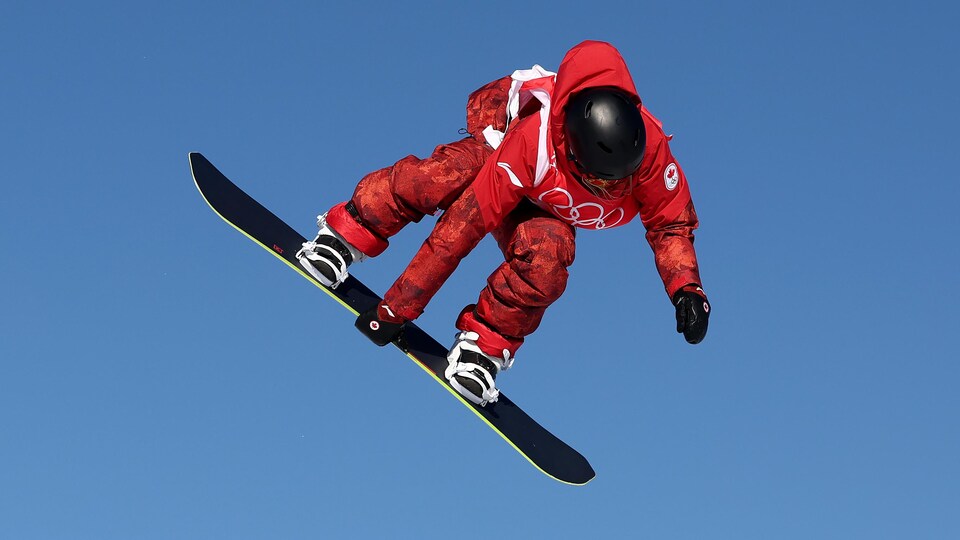Advanced statistics are polarizing the world of sports: an endless playground for some and a pile of soulless numbers for others. Regardless of the camp, the truth is that data aggregation and analysis is here to stay.
More often associated with professional sports teams, the use of advanced statistics has gone to elite amateur sport, which is unlikely to survive without it.
The director of sports sciences at the Institut national du sport du Québec, François Bieuzen, is certain: advanced statistics have become a must.
If we don’t use them, it’s depriving ourselves of a means of performance, the director believes. It’s a performance aid, in the same way as being well -equipped or having physical trainers and mental performance trainers.
Different uses
In elite sport, advanced statistics are often used to calculate an athlete’s training load or risk of injury over the next two days.
For example, in the data we collect, there are jump heights on the platforms, François Bieuzen explains. The athlete goes to a platform and we measure the height of the jump, which gives us an index of his neuromuscular fatigue or his neuromuscular performance.
One might say: “today is better than yesterday and that’s it”. Thanks to the analysis of advanced statistics, we can see if it is related to other events.
Every sport can adapt it to its reality.
For example, Snowboard Canada used advanced statistics to better understand the relationship between tricks performed and judges ’scores.
By placing the sensor on the athletes ’boots, the federation collected rotation data and thanks to an algorithm, it realized that the number of rotations was one of the parameters that most influenced the score of the judge, but there are nuances depending on the gender of the athlete and the side of the take-off.
The sensor also allowed Snowboard Canada staff to confirm that landing impact was necessary for training load planning. On- and off-snow training plans were analyzed, and competition reduction strategies were developed using the statistics gathered.
The Canadian rugby sevens team also used advanced statistics to establish the training load, but also to calculate the effort load according to the type of contact the players were going through.
Where there is more to be done is in performance prediction.
Performance is very difficult to predict, the INS director acknowledges. We want to predict performance, not be too selective to assess what we are doing and find out if we are on the right path.
Meanwhile, the Netherlands Speed Skating Federation has developed an algorithm that it uses to select which athletes will compete in the Olympics, with very positive results.
A similar situation is currently not expected in Canada.
The man, the conductor of advanced statistics
To all who believe that advanced statistics are inhumane to the work of the coach, François Bieuzen is not in this opinion.
Often, we start with the instinct of the coach, the athlete or a team member to say to ourselves: “there, we may have observed something, is the data that‘ we can help us confirm or refute if we are in the right direction. ? Or whether we feel justified or not.
” We never sell advanced statistics as a decision to be made on behalf of staff or coaches or an athlete. It actually has a more objective perspective because we realize that we have a brain that sustains certain events, which is very selective in certain things. Despite the experience and all the good will we can have, it helps a little for us to make a better decision. “
Man therefore remains the one who interprets the statistics and uses his judgment, with all that is implied, good or bad.
An anecdote that took place during the World Series of Baseball in 2020 illustrates this well.
The Dodgers led the series 3-2 against the Tampa Bay Rays. But in Game 6, Rays starting pitcher Blake Snell delivered a very good performance.
In fact, Tampa Bay was leading the game 1-0 in the sixth inning when Rays coach Kevin Cash decided to pull Snell because he didn’t want him to pitch in the third at bat.
Advanced statistics show that the effectiveness of pitchers decreases during this time.
Result: Another pitcher was knocked down and the Dodgers won the game and the World Series.
The coach also admitted after the game that he regretted his decision because it didn’t continue …
We invented nothing
Athletes accumulate data and statistics over a long period of time. The new thing is instead that artificial intelligence makes it possible to collect more data and accumulate it more efficiently.
We are still in statistics as we did 20, 30 or 40 years ago, François Bieuzen recalled. Except now we have powerful computers that allow us to make calculations faster and manage large volumes of data.
Not all Canadian federations use advanced statistics in the same way. Collecting and sorting data is very expensive. It also takes someone and a lot of time to study them.
It is also difficult to harvest the basic material. Athletes must fill out questionnaires, perform physical tests or compile results and there must be enough numbers to draw a conclusion.
The sports in which we worked, it takes on average three, four, five and even six years before the data is actually used, underlined the director of sports science. In speed skating, it took us four years to have data that we trusted and we knew it really helped in making decisions. Previously, too volatile, not solid enough.
Advanced statistics probably still have a lot to offer. François Bieuzen hopes that eventually we can predict injuries for more than two days and predict the performance of athletes over time.
No matter how accurate the sports data is, there are always exceptions that will prove the rule. Talk to Kevin Cash.
Source: Radio-Canada


